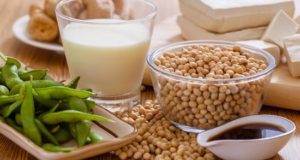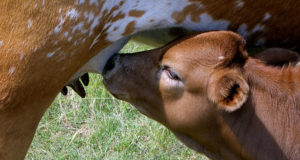
We are speaking only about cooking, not about conservation of food, here.
Of course, without a vacuum machine it is not possible to obtain a perfect vacuum in a plastic bag or plastic pouch; but it is possible to have a partial “sous vide”, enough to realise this method of cooking.
This method can be adapted for home cooking or for small restaurants.
Why prepare food this way? What are the benefits of this method?
– You can prepare the food one to two days, or more, in advance. You can, keep the food in the fridge, or even freeze the preparations, store for a few weeks or a month, then reheat and serve when needed.
Imagine having a party next week with 10 people coming home. What a big quantity of food to store and handle the last day! You may be overwhelmed by such a task. Using this method, a major part of the job can already be done before the day of the party.
You can prepare the food when you have plenty of time, and you don’t need to rush to be ready when your guests arrive. You look quiet, and certainly you will handle the situation much more easily).
– Preparing this way, food is more delicious because the food cooks in it’s own juice, the taste does not disappear in the air. Remember when you enter a kitchen and smell all the wonderful perfumes coming to your nose. This is the taste of the food disappearing in the air. With this method, tastes stay inside.
– An other benefit of this method is that it gives you the opportunity and the simplicity to cook at a low temperature, 70°C/158°F.
Let me explain this point about temperature: When you cook the “normal” way, this is higher than 70°C/158°F. In fact, boiling water is 100°C/212°F; when you roast, an average temperature of 200°C/392°F is used, this is with out doubt far higher than 70°C/158°F.
Here, speaking about temperatures we are reaching a crucial point. Meat, fish as well but less, when cooking at high temperatures are becoming tough. This is because the collagen (fibrous protein constituting a good part of meat) contracts and gets tougher over 70°C/158°F. Thus, the tip is to cook below this temperature to keep the meat tender. (Since the use of “sous vide” technology, the food industry prepares roasted meat with parts of the animal that would never have been roasted in the past because these parts are normally too tough. This is only possible because of low temperature.)
(Low temperature cooking can be done by different means but you will not have all the benefits of the “sous vide” technique, or all the benefits of my method.
You can cook at low temperatures with a normal pot. On the market are electric slow cookers, available for any sort of recipes)
How to prepare “sous vide”, or vacuum cooking, without a vacuum machine.
I give you first, here, mainly for those who already know how to prepare food “sous vide”, a short description of the process, then more details that you can read if you are interested to try this method:
Instead of placing the food to cook in a plastic pouch and vacuum it, simply wrap or roll the food in at least 5 to 6 layers of plastic paper. Make sure to secure the plastic, then, proceed the same way you would with regular vacuum cooking. Of course the time you can keep the food with this process has nothing to do with real vacuum cooking, as there is no control on the vacuum percentage in the parcel you have prepared with this method. I recommend that you follow the same rules you follow for non vacuumed food.
Detailed process
Start with this very basic recipe if you want to try “sous vide”, as it is really easy to do. Then you can adapt my method to different meats, poultry or fish or find a recipe in the one’s we propose on this web site.
Chicken breast prepared in plastic wrapping (“sous vide” style)
Use chicken breast with or without skin, stuffed or not, marinated or not according to the recipe or to your choice. Use it plain or brown it in a skillet before wrapping to have a more roasted flavour. The meat when serving after cooking will of course not be crispy anymore; but you can place it in a skillet for 2 or 3 minutes to recover it’s crispness just before arranging on plates.
1- Put the seasoned pieces of chicken breast, already stuffed, on plastic paper.
2- Roll the chicken breast thoroughly in the plastic paper, making sure to press strongly against the meat while rolling to have the maximum of air escape from the parcel. (We are not trying here to compete with a vacuum machine but we are trying to have the minimum of air inside, mainly because if too much air stays inside, the parcel will floats to the surface of the water when poaching and the cooking will be bad).
Make at least 5 or 6 turns around the meat to obtain a parcel that is firm and strong enough.
3- Make a knot at each side of the parcel with a string or with the plastic itself if you have enough of it. Now, the chicken breast is ready to cook.
4- Put the parcel in a pot of water at 70°C/158°F. Use a thermometer to make sure that you have the right temperature.
5- Keep cooking during about 20 minutes, making sure the temperature is still at 70°C/158°F, checking now and then. The time of cooking depends on the size of the chicken breast. This example is for a piece of 180g/6oz and should not be more than 20 minutes.
Make sure if you cook a stuffed breast of chicken to adjust the cooking time to the size and also to the stuffing. (If you stuff with cooked mushrooms the cooking size will be shorter than a stuffing made with raw meat for instance.)
6- When done, serve immediately with the sauce of your choice. (Slice the chicken breast to have a nicer presentation)
Notes
If you have chosen to prepare the chicken breast in advance, don’t cook them but place in the fridge for one day maximum. If you want to serve the chicken breasts later, freeze them. Keep up to a few weeks. (It is better not to keep food a long time in a freezer as it will start to dry and be “burnt” by the cold after a few month. Make sure to defrost the meat before starting to cook.
If you have at home an electric slow cooker pot, you can use it to prepare this recipe. Fill it up with water and set the thermometer (if available) at 70°C/158°F.
Jean-Louis Vosgien
www.photos-and-recipes.com

Source by Jean-Louis Vosgien
Professionals warn about online buying of medications from China
 Vitamin Agent The Health & Naturalistic Source
Vitamin Agent The Health & Naturalistic Source





